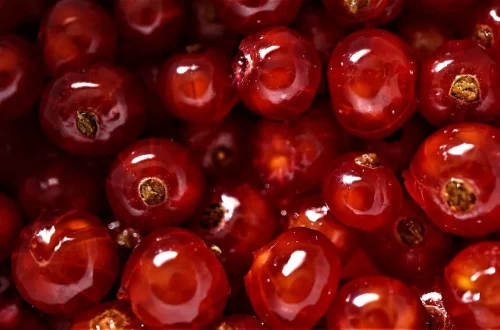
Nutritious Homemade Weight Gainer Recipes for Your Dog
Dogs, like humans, can sometimes struggle with weight management. Whether due to health issues, age, or simply a picky appetite, some dogs may need a little extra help in gaining weight. Many pet owners find themselves seeking nutritious and delicious meal options to ensure their furry friends receive the essential nutrients they need for a healthy weight gain. Homemade meals allow you to control the ingredients and tailor the diet to your dog’s specific needs and preferences, offering a personal touch that store-bought options often lack.
When considering homemade weight gainer recipes, it’s important to focus on nutrient-dense ingredients that provide not only calories but also the vitamins and minerals necessary for your dog’s overall health. A well-balanced diet is crucial, especially for dogs that may be recovering from illness or those with higher energy needs. The good news is that there are numerous simple recipes you can prepare at home using wholesome ingredients. This ensures your dog not only enjoys their meals but also benefits from a diet rich in nutrients.
In this article, we will explore some homemade weight gainer recipes that are not only tasty but also packed with the goodness your dog needs to thrive. These recipes can be easily prepared, and your dog will surely appreciate the effort you put into their meals.
High-Calorie Chicken and Rice Bowl
One of the most beloved combinations for dogs is chicken and rice. This recipe is particularly popular due to its simplicity and the digestibility of its ingredients. To make a high-calorie chicken and rice bowl, you will need boneless, skinless chicken breasts, brown rice, and a variety of dog-safe vegetables.
Start by cooking the brown rice according to the package instructions. Brown rice is a great source of carbohydrates and provides energy, making it an excellent base for your weight-gain recipe. While the rice is cooking, boil or bake the chicken until fully cooked. Shred the chicken into bite-sized pieces once it has cooled down.
Next, add in some vegetables. Carrots, peas, and sweet potatoes are all nutritious options that are safe for dogs. These vegetables not only add flavor but also provide essential vitamins and minerals. To enhance the calorie content, you can mix in a tablespoon of olive oil or coconut oil, which are healthy fats that contribute to weight gain.
Combine all the ingredients in a large bowl, ensuring an even mix. This meal can be served warm or at room temperature. It’s not just a weight gainer; it’s a complete meal that your dog will love. Make sure to store any leftovers in an airtight container in the refrigerator and serve them within a few days.
Nutty Beef and Potato Stew
If your dog enjoys the rich flavor of beef, a nutty beef and potato stew can be a fantastic option for weight gain. This recipe incorporates lean ground beef, which is a great source of protein and fat, essential for building muscle and maintaining energy levels.
Begin by browning the ground beef in a large pot over medium heat. Once the beef is cooked through, drain any excess fat. Next, add diced potatoes, carrots, and green beans to the pot. Potatoes are an excellent source of carbohydrates, while the vegetables provide vitamins and fiber.
To increase the calorie density, consider adding a few tablespoons of peanut butter (make sure it does not contain xylitol, which is toxic to dogs) and some beef broth for moisture and flavor. Simmer the mixture on low heat until the potatoes are tender. The nutty flavor from the peanut butter not only enhances the taste but also provides healthy fats that contribute to weight gain.
Allow the stew to cool before serving it to your dog. This dish can be served on its own or mixed with dry kibble for added texture. Your dog will appreciate this hearty meal, and you can feel good knowing you’ve provided them with a nutritious option to help them gain weight.
Salmon and Quinoa Delight
For a more gourmet approach to weight gain, consider preparing a salmon and quinoa delight. Salmon is rich in omega-3 fatty acids, which are not only beneficial for your dog’s skin and coat but also provide a healthy source of fat and protein. Quinoa is a fantastic grain alternative that is packed with essential amino acids, making it a complete protein source.
Start by cooking the quinoa according to package instructions. While the quinoa is cooking, bake or grill salmon fillets until they are fully cooked. Make sure to remove any bones and skin before shredding the fish into small pieces.
Mix the cooked quinoa with the salmon in a bowl. To enhance the flavor and nutritional value, you can add some chopped spinach or kale, both of which are packed with vitamins and minerals. A drizzle of flaxseed oil or fish oil can further increase the calorie content, making this dish not only tasty but also nutrient-dense.
Serve this meal warm, and watch as your dog enjoys this delicious and healthy dish. You can also store leftovers in the refrigerator for a few days, making it a convenient meal option for busy pet owners.
Benefits of Homemade Weight Gainer Recipes
Choosing to prepare homemade weight gainer recipes for your dog comes with a myriad of benefits. First and foremost, it allows you to have complete control over the ingredients. This means you can avoid fillers, artificial preservatives, and any ingredients that may not sit well with your dog’s digestive system.
Additionally, homemade meals can be tailored to accommodate specific dietary needs, such as allergies or sensitivities. If your dog has a known allergy to certain proteins or grains, preparing their meals at home ensures you can select safe alternatives. This customization can lead to better health outcomes and improved overall well-being.
Moreover, dogs often respond positively to fresh, homemade meals. Many dogs are more excited about food they can smell and see being prepared, which can lead to a more enthusiastic eating experience. This is particularly important for dogs that may be picky eaters or those that have lost their appetite due to illness or stress.
Lastly, preparing meals at home can also be cost-effective in the long run. While there may be an initial investment in ingredients, making larger batches can save money compared to continuously purchasing specialized commercial weight gainer foods. Plus, you’ll have the peace of mind knowing exactly what your dog is eating.
In conclusion, there are numerous nutritious homemade weight gainer recipes that can help support your dog’s health and weight goals. From chicken and rice bowls to gourmet salmon dishes, these recipes are not only beneficial but also enjoyable for your furry friend.
**Disclaimer: This article is not a substitute for professional veterinary advice. Always consult your veterinarian regarding your pet’s health and dietary needs.**




